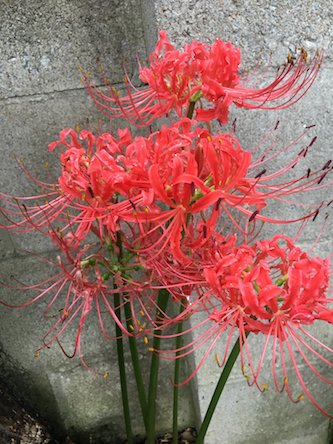Natural Remedies for Arthritis

Arthritis is a rheumatic disorder that causes chronic, intermittent pain affecting the joints and connective tissues. Where bones connect within the body, there is swelling, redness, stiffness, and decreased range of motion. There are more than 100 types of arthritis, the most common being osteoarthritis and rheumatoid arthritis.
Osteoarthritis is a degenerative joint disease that is caused by repeated wear and tear to the joint cartilage. It occurs with age, in the hips, knees, and fingers. Over time, osteoarthritis can culminate in bone grinding on bone.
Rheumatoid arthritis is caused when the body’s immune system attacks the synovial membrane enclosing the joints. It tends to happen in middle age in the feet and hands. Eventually, this autoimmune disorder can progress until cartilage and bone are destroyed in the joint.
Arthritis is the leading cause of work-related disability. Typical treatments for pain and swollen joints include analgesics and non-steroidal anti-inflammatory drugs and medications to suppress the immune system. These treatments can cause worrisome side effects and may not be effective.
1. Maintain a Healthy Weight
Being just 10 pounds overweight adds 30 to 60 pounds of force on the knee and other joints with every step. The increased pressure makes walking and other activities more painful and can hasten the breakdown of cartilage. Maintaining a healthy body mass index significantly reduces the risk of developing osteoarthritis. For every 11 pounds of weight loss, the risk of knee osteoarthritis dropped by over 50%. For rheumatoid arthritis sufferers, weight loss can lead to sustained remission
2. Regular Exercise
While it might be the last thing you want to do when your joints ache, keeping things moving with a regular exercise program will help ease pain and stiffness. Physical activity provides a multi-faceted range of benefits for arthritis sufferers, including strengthening the muscles around the joints, improved bone strength, maintaining a healthy body weight, more restful sleep, more energy throughout the day, and better balance. Exercise won’t worsen your joint health – in fact, lack of movement is what may be making your joints stiffer. Just a few minutes of physical activity each day – such as walking, swimming, or using a stationary bicycle – can have a huge impact on quality of life. It doesn’t need to be rigorous – go slow, move gently, and if it’s too painful, take a break.
3. Manage Your Stress
Those living with chronic pain struggle with depression and anxiety at a
rate of two to ten times greater than the general population. While all types of arthritis can have a negative impact on your mental health, people with rheumatoid arthritis are at a heightened risk of major depressive disorder. It appears that these two conditions co-occur and feed off of each other – feelings of depression and anxiety can lower your pain threshold, while constant pain can worsen your anxiety and depression. The prevalence of depression in arthritis patients may be related to elevated inflammation levels in the body, since pro-inflammatory enzymes are implicated in both rheumatoid arthritis and depressive symptoms.
If you’re struggling with low mood, there are things you can do to help manage anxiety and depression. Tending a garden or taking a walk are powerful ways to boost mood that will keep you active. Supplementing with St. John’s Wort or herbal tinctures may offer some relief, and aromatherapy with essential oils for anxiety.
4. Avoid These
Pro-Inflammatory Foods these foods are known to trigger inflammation.
Sugar– Consuming processed sugar releases inflammatory cytokines that can make pain worse. Here are tips on how to quit sugar and natural sweetener alternatives.
Refined Carbohydrates – White bread, white rice, and other kinds of refined grains are high glycemic index foods that can fuel inflammation. Paleo and Keto diets have healthy meal plan ideas that help limit carbohydrate intake.
Fried Foods – Reducing the amount of fried foods can lower inflammation levels and help restore the body’s natural defenses.
Red Meat and Processed Meat – Eating a high protein diet of steaks and hot dogs can induce inflammation and accelerate the process behind inflammatory diseases.
Trans Fats – An unsaturated fat widely used in the food industry, trans fats can cause systemic inflammation. Avoid margarine, shortening, lard, and processed foods.
5. Eat More Foods that Fight Inflammation – Including anti-inflammatory foods is a natural way to combat arthritic pain. According to Harvard Health:
The Top Foods That Fight inflammation:
Fruits such as tomatoes, strawberries, blueberries, apples, cherries, oranges, and pineapples are rich in antioxidants that help ward off inflammation.
Leafy Greens like spinach, kale, and collards.
Nuts like almonds and walnuts.
Fatty Fish such as salmon, mackerel, tuna, and sardines.
Olive Oil is a healthy substitute for trans fats.
To fight inflammation with food, try the Mediterranean diet, shown to reduce inflammatory markers throughout the body.
6. Fermented Cod Liver Oil is an excellent source of vitamin A and D, and omega-3 fatty acids. Fermented cod liver oil offers a natural way to fight pain and inflammation. If arthritis is complicated by depression, the omega-3s in cod liver oil have been shown to lessen anxiety and boost mood.
7. Ginger is aromatic and spicy, and contains compounds that combat both pain and inflammation. Ginger possesses broad anti-inflammatory action that shares many of the properties of NSAIDs, but with better results and fewer side effects. Ginger interacts with genes responsible for encoding enzymes involved in inflammatory responses, beneficial for those suffering from chronic inflammation.
8. Turmeric root has wonderful applications for the skin and overall physical health. For arthritis, turmeric can provide relief from swelling and pain of inflamed joints.Studies involving curcumin and inflammation have found it is capable of inhibiting several pro-inflammatory enzymes, including the “holy grail” of inflammation. Researchers found that turmeric improved pain levels when walking, and had less morning stiffness, and better range of movement.
Mix fresh rhizomes or dried spices into a tasty beverage or make turmeric paste and apply directly to achy joints for quick pain relief.
9. Collagen is the most abundant protein in our bodies. Collagen is found in our skin, bones, tendons, organs, and cartilage. With degenerative diseases like arthritis, collagen supplements may help rebuild joint cartilage, strengthen bones, and relieve pain.Oral collagen supplements can significantly reduced pain and the stiffness of osteoarthritis and improved the ability to carry out physical activities. Collagen has a similar impact on swelling and joint tenderness in rheumatoid arthritis, without any adverse effects.
Collagen can only be sourced from the skins, tendons, marrow, and ligaments of animals. Replenish collagen by making bone broth or using powdered collagen you can add to recipes.
10. Eggshell Membrane– the egg membrane is the thin, transparent layer that clings to the inside of an eggshell after you’ve broken an egg. It is composed off all sorts of good stuff for joint and tissue support: collagen, glucosamine, chondroitin sulfate, and hyaluronic acids. Eggshell membrane was effective for people with joint and connective tissue disorders, according to a study published in Clinical Interventions in Aging. Taking 500mg of eggshell membrane daily resulting in a 28% increase in flexibility after just 7 days, and a 72% reduction in general pain, 44% increase in flexibility, and 76% decrease in pain associated with range of movement after 30 days of treatment. You can harvest eggshell membranes yourself or by taking eggshell membrane capsules.
11. CBD Oil is a rather new entrant to modern medicine and has shown promising results in treating a range of ailments. CBD possesses antioxidant, anti-inflammatory, and analgesic properties. CBD interacts with brain receptors in the endocannabinoid system involved in regulating pain sensation, the immune system, and mood. Preliminary findings suggest it may be of therapeutic value for arthritic conditions.
Sativex– patients used an oral spray composed of CBD and THC in equal parts – daily for five weeks and compared with a placebo group, and there were significant improvements in pain on movement, pain at rest, and sleep quality. Pure CBD helps protect the joints against damage and decreased pro-inflammatory enzymes such as tumor necrosis factor. The researchers concluded that CBD oil has a potent anti-arthritic effect due to its immunosuppressive and anti-inflammatory action. CBD applied to inflamed joints reduces swelling and pain and the effects were long lasting and without any adverse side effects.
12. Capsaicin gives chili peppers their fiery heat. As food or used topically, capsaicin selectively interacts with nociceptive neurons in the brain which are responsible for how we perceive pain. Capsaicin is sourced from chili peppers like jalapeno, cayenne, and habanero or purchase a topical cream with capsaicin standardized at 0.1%.
13. Gamma-Linolenic Acid(GLA) is an omega-6 fatty acid found in botanical oils like evening primrose, black currant, and borage. Taken as a dietary supplement, GLA appears to be an effective treatment for joint pain, stiffness, and swelling associated with rheumatoid arthritis.It is capable of suppressing inflammation at a daily dose of 2.8 grams. After one year of GLA treatment, researchers found that 76% of participants experienced a meaningful reduction in overall disease activity.
14. Healing Herbs – The earth is abundant in plants that soothe and heal. Healing herbs that hold great promise as treatments for rheumatic conditions:
- Cat’s Claw – The bark and roots of this woody vine have powerful anti-inflammatory and antioxidant properties that reduced pain and swelling in both osteoarthritis and rheumatoid arthritis. Cat’s claw can be taken as a
dietary supplement.
- Frankincense– Native to India, frankincense has been shown to help curtail pro-inflammatory enzymes, improve joint health, and reduce the deterioration of cartilage. Frankincense is available as an essential oil and daily supplement.
- Stinging
Nettle is a weed that grows in the wilds throughout North America that may help improve inflammation and pain.
- Rosehips are one of the richest sources of vitamin C, rosehips have natural pain-relieving
properties that benefit people with osteoarthritis.
- Pineapple
stems and juice contain bromelain, an enzyme that exhibits potent pain and
swelling relief in knee osteoarthritis.







